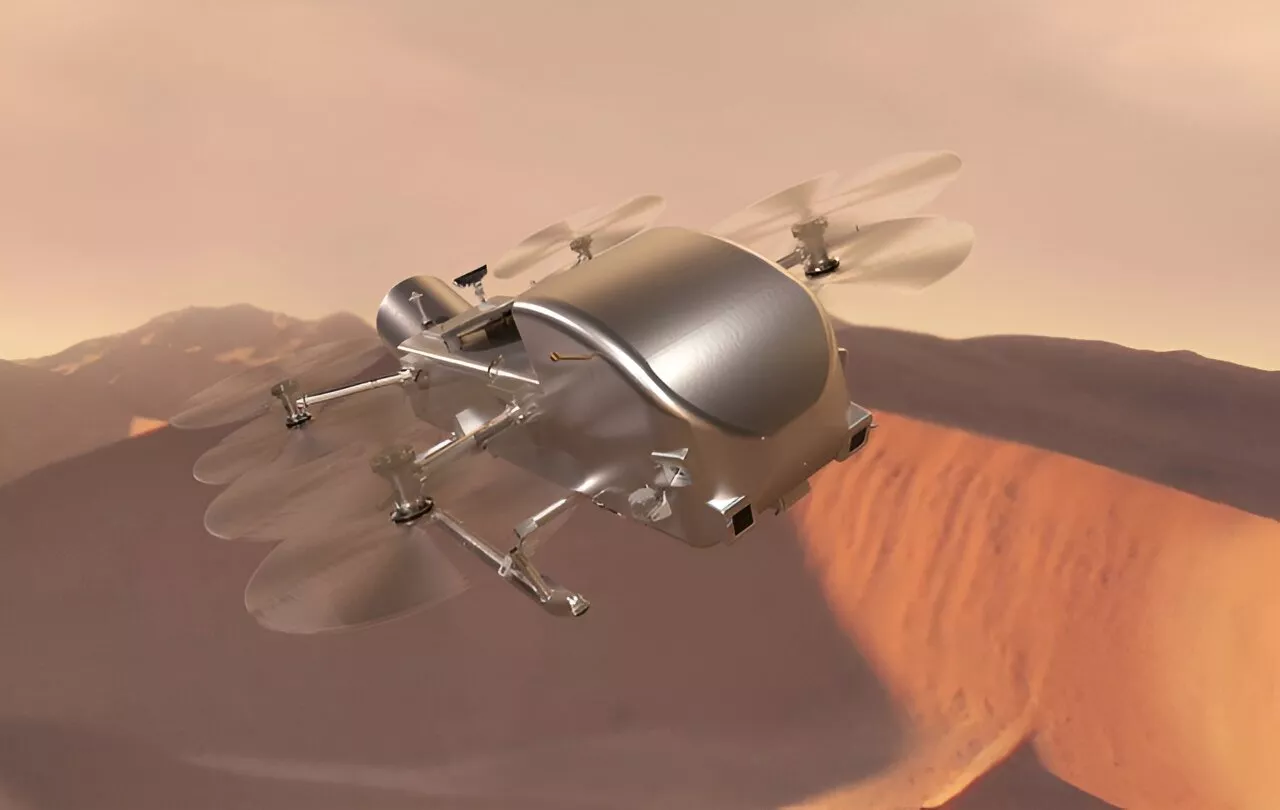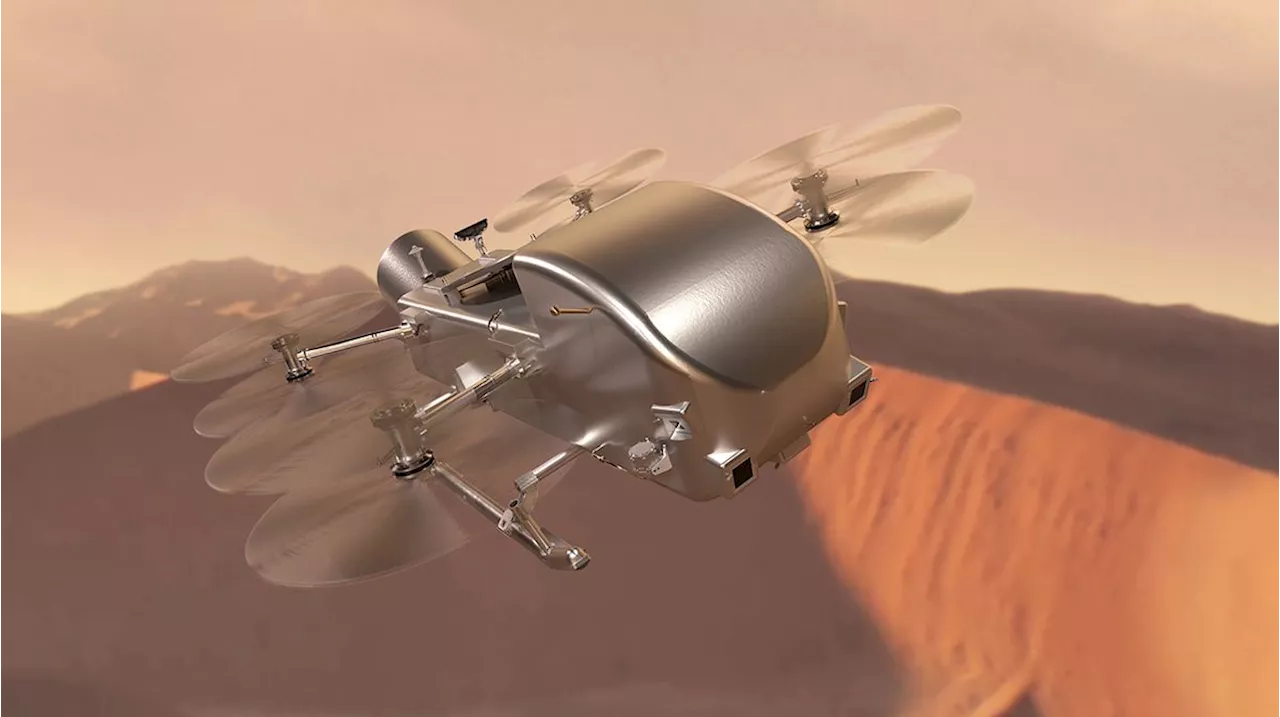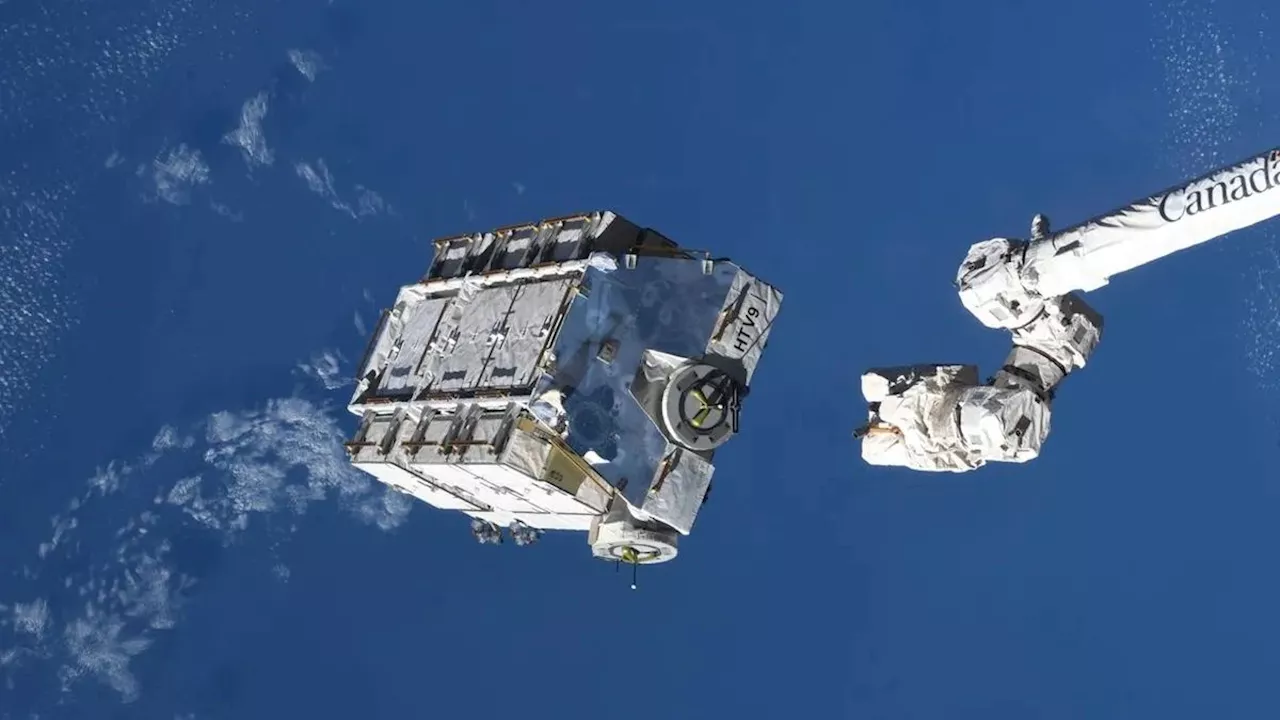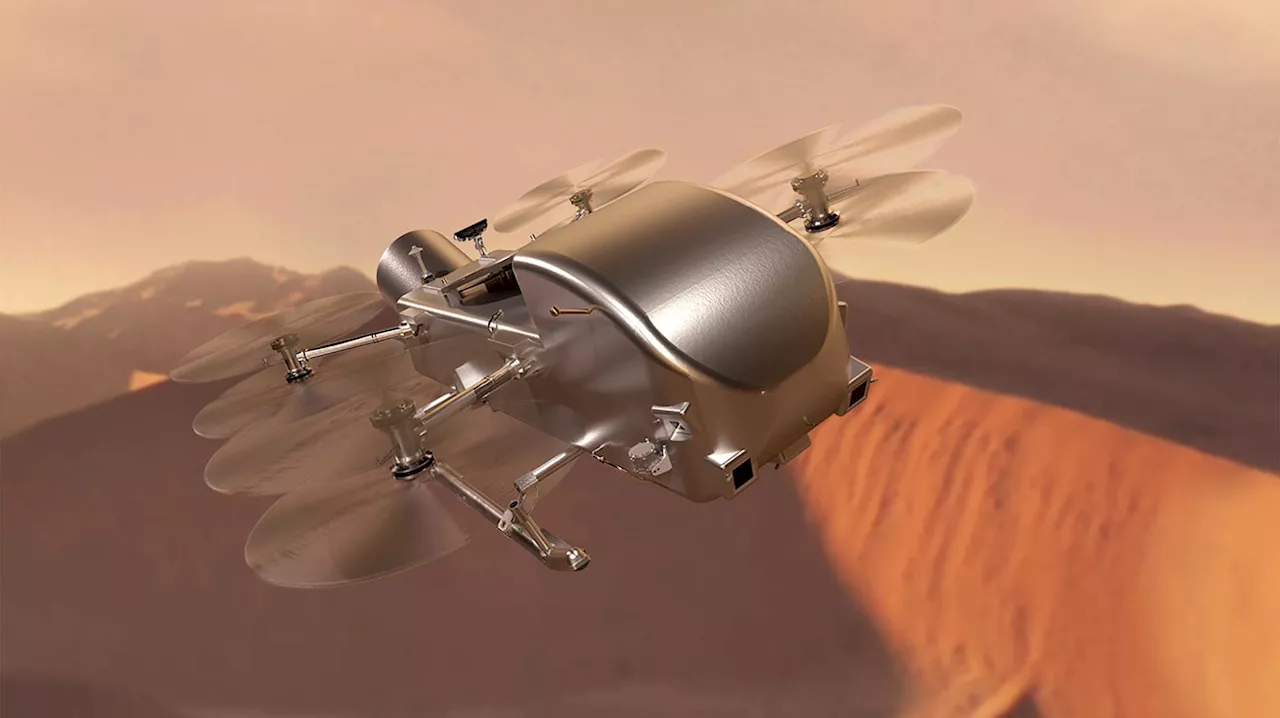Science, Space and Technology News 2024
Artist’s impression of Dragonfly soaring over the dunes of Saturn’s moon Titan. The mission, managed by the Johns Hopkins Applied Physics Laboratory, involves multiple partners and aims to study prebiotic chemical processes using a rotorcraft that will arrive at Titan in 2034. Credit: NASA/Johns Hopkins APL/Steve Gribben’s moon Titan, has progressed to final design and construction stages with a confirmed launch in 2028 and a budget of $3.35 billion.
NASA has confirmed its Dragonfly rotorcraft mission to Saturn’s organic-rich moon Titan. The decision allows the mission to progress to completion of final design, followed by the construction and testing of the entire spacecraft and science instruments. “Dragonfly is a spectacular science mission with broad community interest, and we are excited to take the next steps on this mission,” said Nicky Fox, associate administrator, Science Mission Directorate at NASA Headquarters in Washington. “Exploring Titan will push the boundaries of what we can do with rotorcraft outside of Earth.”of its Preliminary Design Review. At that time, however, the mission was asked to develop an updated budget and schedule to fit into the current funding environment.
With the release of the president’s fiscal year 2025 budget request, Dragonfly is confirmed with a total lifecycle cost of $3.35 billion and a launch date of July 2028. This reflects a cost increase of about two times the proposed cost and a delay of more than two years from when the mission was originally selected in 2019. Following that selection, NASA had to direct the project to replan multiple times due to funding constraints in fiscal years 2020 through 2022.
Dragonfly is being designed and built under the direction of the Johns Hopkins Applied Physics Laboratory in Laurel, Maryland, which manages the mission for NASA. Elizabeth Turtle of APL is the principal investigator.
United States Latest News, United States Headlines
Similar News:You can also read news stories similar to this one that we have collected from other news sources.
 NASA's Dragonfly rotorcraft mission to Saturn's moon Titan confirmedNASA has confirmed its Dragonfly rotorcraft mission to Saturn's organic-rich moon Titan. The decision allows the mission to progress to the completion of the final design, followed by the construction and testing of the entire spacecraft and science instruments.
NASA's Dragonfly rotorcraft mission to Saturn's moon Titan confirmedNASA has confirmed its Dragonfly rotorcraft mission to Saturn's organic-rich moon Titan. The decision allows the mission to progress to the completion of the final design, followed by the construction and testing of the entire spacecraft and science instruments.
Read more »
 NASA greenlights 2028 launch for epic Dragonfly mission to Saturn's huge moon TitanSharmila Kuthunur is a Seattle-based science journalist covering astronomy, astrophysics and space exploration. Follow her on X skuthunur.
NASA greenlights 2028 launch for epic Dragonfly mission to Saturn's huge moon TitanSharmila Kuthunur is a Seattle-based science journalist covering astronomy, astrophysics and space exploration. Follow her on X skuthunur.
Read more »
 Dragonfly: NASA Just Confirmed The Most Exciting Space Mission Of Your LifetimeI'm an award-winning journalist writing about the night sky and eclipses.
Dragonfly: NASA Just Confirmed The Most Exciting Space Mission Of Your LifetimeI'm an award-winning journalist writing about the night sky and eclipses.
Read more »
 Object that slammed into Florida home was indeed space junk from ISS, NASA confirmsMichael Wall is a Senior Space Writer with Space.com and joined the team in 2010. He primarily covers exoplanets, spaceflight and military space, but has been known to dabble in the space art beat. His book about the search for alien life, 'Out There,' was published on Nov. 13, 2018.
Object that slammed into Florida home was indeed space junk from ISS, NASA confirmsMichael Wall is a Senior Space Writer with Space.com and joined the team in 2010. He primarily covers exoplanets, spaceflight and military space, but has been known to dabble in the space art beat. His book about the search for alien life, 'Out There,' was published on Nov. 13, 2018.
Read more »
 NASA confirms mystery object that crashed through roof of Florida home came from space stationNASA says it determined that an object that crashed through the roof of a Florida home last month was a chunk of space junk from equipment discarded at the International Space Station. The debris struck a home in Naples on March 8. NASA recovered the object from the homeowner and took it to the Kennedy Space Center in Cape Canaveral for analysis.
NASA confirms mystery object that crashed through roof of Florida home came from space stationNASA says it determined that an object that crashed through the roof of a Florida home last month was a chunk of space junk from equipment discarded at the International Space Station. The debris struck a home in Naples on March 8. NASA recovered the object from the homeowner and took it to the Kennedy Space Center in Cape Canaveral for analysis.
Read more »
 Mystery Object from Space Station Crashes Through Florida Home, NASA ConfirmsNASA has confirmed that a mysterious object that crashed through the roof of a home in Florida came from the International Space Station. The object, identified as a metal support used to mount old batteries, was discarded from the space station in 2021. It was expected to burn up upon reentry into Earth's atmosphere, but a piece survived and caused damage to the home.
Mystery Object from Space Station Crashes Through Florida Home, NASA ConfirmsNASA has confirmed that a mysterious object that crashed through the roof of a home in Florida came from the International Space Station. The object, identified as a metal support used to mount old batteries, was discarded from the space station in 2021. It was expected to burn up upon reentry into Earth's atmosphere, but a piece survived and caused damage to the home.
Read more »
